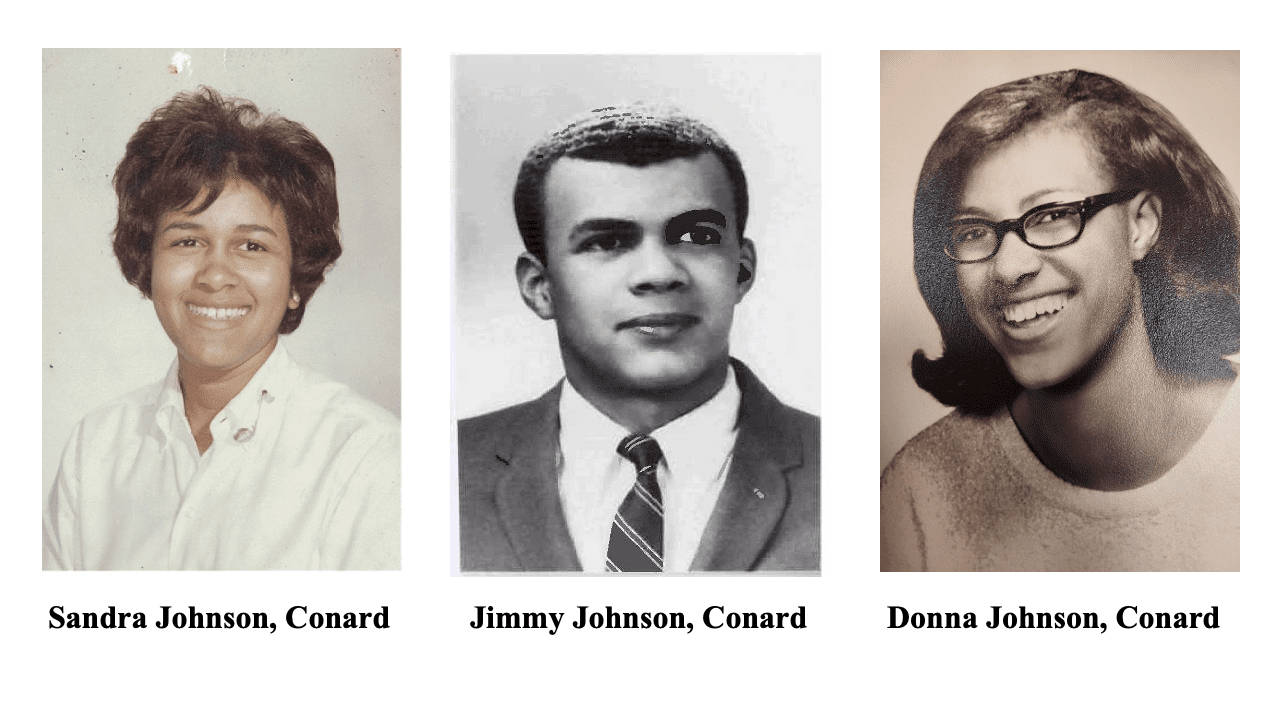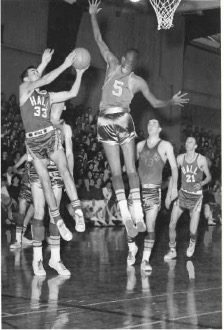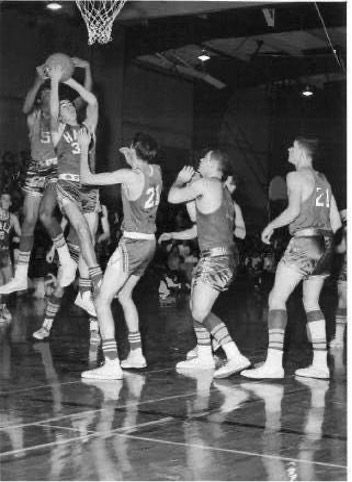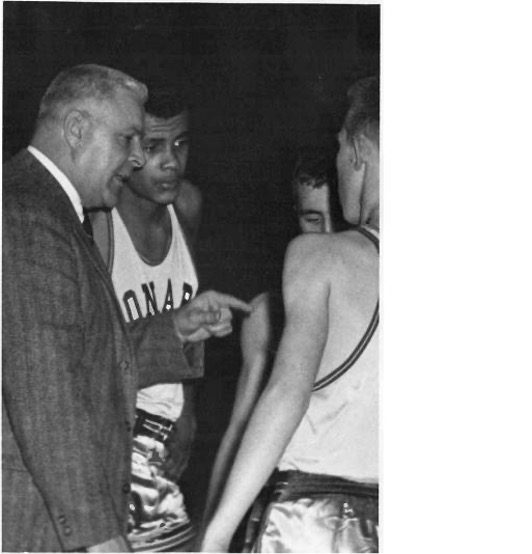Op-Ed: Black History Month

Audio By Carbonatix

Courtesy photos
Thoughts about Black History Month from a West Hartford native.
By James A. Johnson
“The problem of the Twentieth Century is the problem of the color line.”- W. E. B. DuBois, Ph D. DuBois was the first African American to earn a PhD at Harvard in 1895. We are now in the third decade of the 21st Century and race is still a problem.
Assimilation
The reason why African Americans have not fully assimilated like other groups such as Jews, Irish, Italians, and Asians is because of distinct physical differences. Simply put, Jews, Irish, Italians, and East Indians are Caucasian. Additionally, enslaved Africans were stripped of their culture, children sold to slave traders, and husbands sold separately from their spouses. Tack on brutal discrimination and rigid segregation and you have a group of people noticeably different in their behavior, speech, and some values from the majority group.
Jews who were victims of the Holocaust with 8 million murdered by Hitler and discriminated against in the United States are still able to maintain their culture and practice their religion. This is a huge advantage in comparison to African Americans. The reader might be asking: “Where do you fit into all of this?” That is an excellent question. As one white lawyer friend put it: “You are kind of in the middle – meaning neither Black as one knows it or white. Another lawyer friend said: “How many Blacks do you know that are as articulate as you, have your demeanor and are sophisticated like you?” Another white lawyer interrupted and said: “How many white lawyers do you know with those qualities together with Jim’s striking physical presence?” The room got quiet as if someone had flipped a switch. One answer to the above questions is that I did not grow up in the hood. I grew up in a neighborhood of West Hartford. Moreover, my parents had those outstanding qualities.

Jimmy Johnson. Courtesy of Jimmy Johnson
Basketball
The game of basketball has been good to me.
In the summer when I was growing up, beginning at age 15, I played every day from 6-8:30 p.m. and all day on Saturday on the outdoor courts at Duffy Elementary School, Morley Elementary School, Keney Park, and other courts in metropolitan Hartford. It was a place of intense feelings of joy and satisfaction because I was very good at basketball. One day in the city of Hartford a Black basketball player said to me: “You play so easy! Oh, don’t get me wrong you are a very good player, but you play so easy.” He was telling me that I was not ferocious in rebounding even though I was a great rebounder and a skywalker. This is the difference between some Black inner-city and a suburban player. I would jump above everyone else and snatch the rebound – no elbows swinging nor a stern or menacing look on my face. My speech, values, and even the way I played basketball was slightly different. Although I was aware and proud of my color I often struggled with my identity as a person of color. This is cultural and my culture and values were different.

Courtesy of Jim Johnson
Basketball has provided me with a high level of recognition and self-esteem. If there were any question as to my identity, it might invoke: “the ball player?” or “the Conard basketball captain?” This would be a rarity. Five years after I graduated Conard I stopped by the Duffy Elementary School baseball field and was standing behind the big chain-link fence. The baseball players on the bench looked over and said: “Isn’t that Jimmy Johnson?” These boys were probably 7, 8, and 9 years old when I was at Conard. This was the Sprinks Alumni League baseball team that I played with nine years earlier with the same coach. As I was leaving the coach shouted out: “Jimmy” and we had a nice chat. I set all this out to demonstrate what sports has done for me and what it can do for other young boys and girls.

Coach Larry Stewart, Jimmy Johnson, Bill Julavits, and Don Coppen. Courtesy of Jimmy Johnson
History
To fully understand this story, you must read
- Thoughts About Black History https://we-ha.com/op-ed-thoughts-about-black-history-month
- Reflections (2023) https://we-ha.com/op-ed-black-history-month-is-a-time-for-reflection-on-the-past-and-personal-discovery-for-all
- Suburban West Hartford https://we-ha.com/op-ed-my-suburban-west-hartford-experience
- Confessions https://we-ha.com/op-ed-confessions-of-a-basketball-star
What does all of the above have to do with Black History Month? This is a history lesson for both whites and Blacks. From the moment the first abducted Africans found themselves enslaved and oppressed freedom became their singular ambition. Freedom from lynching, segregation, political disenfranchisement, police brutality, and racial hatred. And through the centuries, for their children and their children’s children, that most human desire remained constant.
Flee North
Scott Shane’s book “Flee North” begins in Baltimore, Maryland. Between 1815 and 1865, about one million people were forced south, by slave traders or by slaveholders relocating.
In Shane’s riveting book he states: “Black history has sometimes been a way for white Americans to avoid looking squarely at their own past. Black Americans did not own themselves, sell themselves, rape themselves, or ship themselves south. Slavery was an institution of the white power structure, the ‘slave power,’ as it was memorably called two centuries ago. To try to separate the history of Black Americans seems impossible if truth telling is the goal.”
Scott Shane goes on to state: “The idea that some legislatures have recently proposed laws to protect white children from feeling discomfort over the history of race in America is beyond parody. It is very much of a piece with Maryland law which in 1857 a free African American, Daniel Green was sentenced to ten years in prison for mere possession of Uncle Tom’s Cabin, the best-selling novel exposing the cruelty of slaveholders and slave trade.” – Flee North, p. 302
Conclusion
The impact of slavery for many African Americans has a duel burden of fighting racial injustice and rising above hateful bigotry that attempts to keep them shackled to the past. For two centuries it is a burden that no other racial or ethnic group has had to endure.
Every police killing of an unarmed Black man, woman, or child damages America. It is a stain on our nation’s very soul. What Black people want is for America to live up to its promise for all people. I look forward to the day when we stop celebrating “first” – the first African American to do ———— that nobody thought we could do.
We should follow the advice of Walter White, Sr.:
“Human kindness, decency, love is the only real thing in the world. … It is up to you two, and others like you, to use your education and talents to make love as positive an emotion in the world as are prejudice and hate. That’s the only way the world can save itself.” – Walter White’s father to his two sons as he lay dying in a Jim Crow hospital in Atlanta, Georgia.” – Walter White, “A Man Called White,” by A.J. Baime.
About the Author:
James A. Johnson is a native of West Hartford, a Sedgwick and Conard alum and a former captain of the basketball team. Today he is an accomplished trial lawyer concentrating in serious personal injury, sports and entertainment law, insurance coverage under the Commercial General Liability (CGL) policy, and federal criminal defense. Jim also assists lawyers as co-counsel in litigation and is an active member of the Massachusetts, Michigan, Texas, and Federal Court Bars. He can be reached at www.JamesAJohnsonEsq.com
We-Ha.com will accept Op-Ed submissions from members of the community. We reserve the right to edit all submitted content.
Like what you see here? Click here to subscribe to We-Ha’s newsletter so you’ll always be in the know about what’s happening in West Hartford! Click the blue button below to become a supporter of We-Ha.com and our efforts to continue producing quality journalism.




Great stuff, Mr Johnson.
Too bad republicans cancelled black history month.